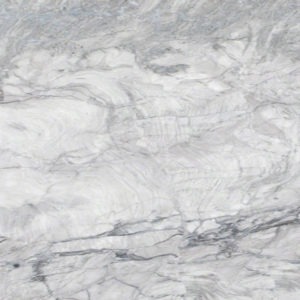Beloved by emperors and artisans alike, marble has been one of the most beautiful and sought-after stones for centuries. Whether it’s as pure white as snow or streaked with dramatic, colorful veins, each piece of marble is a unique and stunning work of art and, when used in the home, adds an undeniable touch of luxury and opulence. But, what is marble, really? Let’s demystify how this stone comes to be and why it’s been beloved for so long.
How Is Marble Formed?
Marble is a metamorphic rock, which is a rock that has been physically and chemically transformed over time due to intense heat and pressure. Marble begins life as limestone, which is a soft stone made primarily of calcite. Under heat and pressure caused by magma or the tectonic plates, this limestone begins to recrystallize, changing the texture of the rock and causing the calcite crystals to grow and interlock. Marble can be found in many areas around the world, from Macedonia to Vermont, but the most famous varieties come from Italy and Greece, where it is often purest in color.
What Gives Marble Its Color and Veining?
Purity, of course, refers to the lack of color variation within a specific sample of stone. Although colored veining is, for many people, a very desired characteristic, the purest marbles are almost completely white or very light in color. The veining is caused by mineral deposits that are either within the original limestone or are present as the limestone is transforming into marble. The minerals tend to settle in layers, which we call “veining”. Depending on the number of minerals present in the stone, the veining can either be very minimal — thin, delicate lines — or dramatic — large swaths of colors that can seem almost like smoke within the marble.
Minerals present during recrystallization can sometimes tint the entire piece of marble in a wide variety of colors. Blues, grays, pinks, and reds are the most common, but green, purple, and yellow marbles can also be found. Clay, mica, quartz, and iron oxides are some of the most common minerals found in marble and cause reddish, gray, and white tints or veining. Hematite and iron oxides are also often present and can create red, pink, and brown hues while limonite causes a yellow coloration and serpentine a deep, rich green.
Regardless of the coloration, one of the most unique aspects of marble is that it’s translucent, meaning you can see past the outer surface. Although no marble is completely transparent, you can often see through at least a few millimeters of the stone, which is one of the reasons it has been used so extensively in sculpture. The translucency of the stone gives it more depth, making statues of people feel whole and alive than sculptures made with more opaque material.
Marble is the perfect softness for carving though its sensitivity can be a detriment in many cases. Although many marble buildings and sculptures have stood for thousands of years, weather and temperature differentials can cause them to break and erode, as do acids. That being said, it still takes quite a lot of work to quarry. Marble deposits can often be enormous, and explosives are needed in order to begin breaking up the rock. Machines then help create grooves in the stone, which are leveraged to split it from the rock face.
Where and How Is Marble Used Today?
Marble is still used extensively in buildings today and can be seen in churches, city halls, and historic buildings alike. However, it can also be found in the humble home. Marble countertops are beloved by homeowners for their beauty, and especially by those who love to bake. Because the surface always stays cool, it prevents buttery doughs from getting too soft and helps temper chocolate to the perfect consistency to make truffles, bonbons, and other treats. Although marble countertops need frequent sealing and care must be taken to prevent staining and acid erosion, the effort is worth it for the suite elegance the stone will give your kitchen.
Of course, you can use marble elsewhere in your home. Marble floor tiles can look stunning in an entryway, and can also be used to create decorative backsplashes in the kitchen or in the bathroom. A marble fireplace, whether plain or carved, can also add a little drama and elegance to your living room.
One look at a piece of marble and it’s easy to see why it has been beloved for generations. Its smooth, cool surface, elegant veining, and unique color palate combine to create something that is organically beautiful. Thankfully, this material is no longer just for kings. Whether you’d like a small slab in your kitchen to want the dramatic look of a carved fireplace, marble is an attainable luxury that can be crafted to suit your needs. Looking for a little inspiration? Check out our live inventory and begin dreaming about how these stones would look in your very own palace.


